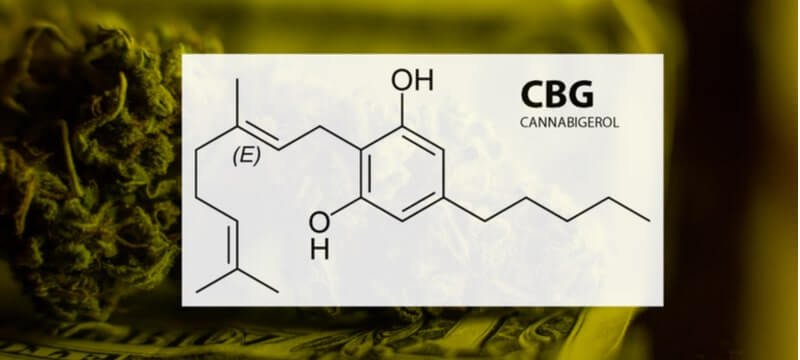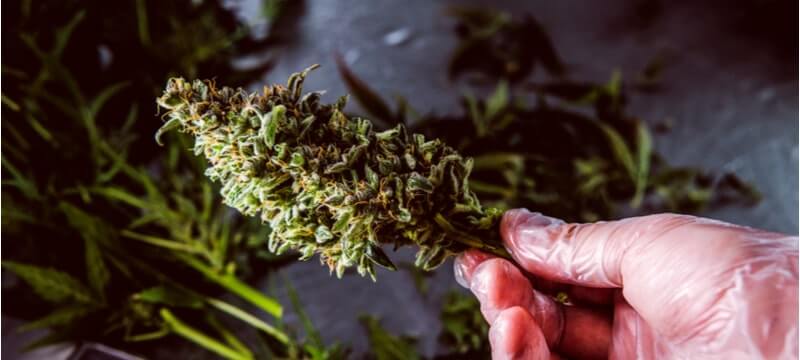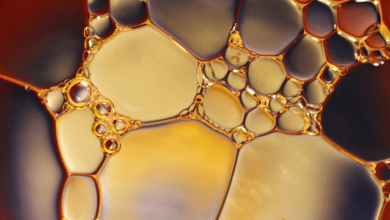
For a while now, the popularity of CBD has been growing exponentially, thanks to its many potential health benefits and the scientific studies supporting positive anecdotal evidence. The compound is quickly leaving behind the stigma attached to it, and now people from different demographics are making it part of their everyday lives and being very vocal about how it has helped them. However, while CBD has been making a name for itself worldwide, another cannabinoid called cannabigerol (CBG) has been getting a lot of attention for its potential health benefits. But what exactly is CBG, and how does it differ from CBD? Let’s look at CBG vs CBD and discuss the differences between the two in more detail.
Table of Contents
What is CBG?
If you’re reading this, chances are you are a fan of CBD or at least know someone who uses it. However, while you may know exactly what CBD is and the benefits it has, you may not have heard of CBG before. So what is it exactly?
Like CBD, CBG is a cannabinoid acquired from the cannabis plant. It is known as the mother of all cannabinoids, as all cannabinoids come from cannabigerol acid (CBGA). CBGA breaks down to form other cannabinoids when heated, including CBD, THC and a minor amount of CBG (a non-acidic form of CBGA).
The relatively unknown compound is growing in popularity thanks to an increasing number of studies. While CBD and tetrahydrocannabinol (THC) are more commonly known and abundant than CBG, early evidence from studies are promising, with some people even going so far as to say it could be the new CBD.
However, the two do have different functions and health benefits to each other. Unfortunately, not all the effects of CBG are yet known, as most research is being done on CBD, and many more studies are needed for the effects of CBG to be as thoroughly understood as CBD is.
Luckily, now that CBG is growing in popularity, we can expect to receive more information on the mother of all cannabinoids, including how it differs from CBD.
How is CBG extracted?
CBG is known as a minor cannabinoid, as it is present in less than 1% of strains. It is more commonplace in younger plants as the CBG is at its highest, since it has not yet broken down into other cannabinoids. This is one of the reasons why it is best to harvest the plant when it is only a few weeks old, as you’ll get the most CBG out of it. However, harvesting the plant at such an early stage means that other cannabinoids have not yet developed, so you won’t be able to get CBD, THC or any other cannabinoids besides CBG out of it.
Because CBG is so scarce and inefficient to harvest, it is more expensive than CBD. Luckily, breeders are coming up with solutions by experimenting with genetics and cross-breeding to get more CBG out of mature plants. This is good news, as making CBG extraction more efficient will make CBG products more affordable and available to more people.
CBG vs CBD – What exactly is the difference?
CBG and CBD are quite similar compounds. Both are non-intoxicating (unlike THC), have anti-inflammatory properties, and react with the same receptors in the body. However, there are some differences between the two compounds, namely:
- Quantity: The Majority of cannabis plants contain roughly 1% of CBG and 25% of CBD.
- Interaction: CBD indirectly interacts with the endocannabinoid system, while CBG interacts directly with CB1 and CB2 cannabinoid receptors.
- Cost: Since it is less efficient to produce CBG than CBD, CBG is seen as a “high-end” product and is, therefore, more expensive than CBD.
- Structure: CBG and CBD have different molecular structures.
- Research: Much more research has been done on CBD, as it is easy to produce. CBG, on the other hand, is not found in large quantities, so it is more difficult to research.
- Appetite: A 2016 study done on rats showed evidence that CBG is likely to increase appetite. After the rats were administered CBG, they ate almost double what they usually did. Studies with CBD, however, show that CBD may actually reduce appetite.
What are the benefits of CBG?
While research on the effects and benefits of CBG is still in its infancy, there is believed to be several potential benefits.
CBG is purported to help:
- Relieve pain: CBG has pain-resolving properties that can potentially help relieve pain.
- Increase appetite: As mentioned earlier, CBG has the potential to increase appetite. By driving hunger, CBG can treat appetite loss and unintentional weight loss, which several diseases can cause.
- Reduce inflammation: CBG fights inflammation and is believed to be especially helpful for treating inflammatory conditions such as inflammatory bowel disease (IBD). IBD causes inflammation in the bowel and is incurable. It is believed that CBG has the potential to reduce this inflammation in the bowel.
- Treat glaucoma: CBG is said to reduce eye pressure and increase aqueous humour outflow, thereby effectively treating glaucoma.
- Kill bacterial infections: Research has shown evidence that CBG has the potential to be as effective as a general antibiotic.
- Treat neurodegenerative conditions: CBG has the potential to protect the nerves in the brain thanks to its possible neuroprotective properties.
It needs to be noted that almost all the studies done on CBG have been done on animals. Until research has been conducted on humans, none of these claims can be confirmed without a doubt. However, results from current animal studies are promising.
CBG vs CBD – Is CBG better than CBD?
Before we can decide whether CBG is better than CBD, there are a number of things that need to happen. Firstly, more research. Secondly, CBG needs to be made available and affordable to the public at large, not just high-end clients. But how long will all of this take?
Fortunately, now that more people are learning about CBG, interest is growing along with availability and affordability. Soon we may be able to answer the question is CBG better than CBD.
You may also like to read: Study Reveals CBC and CBG Exhibit Anti-tumour Properties






